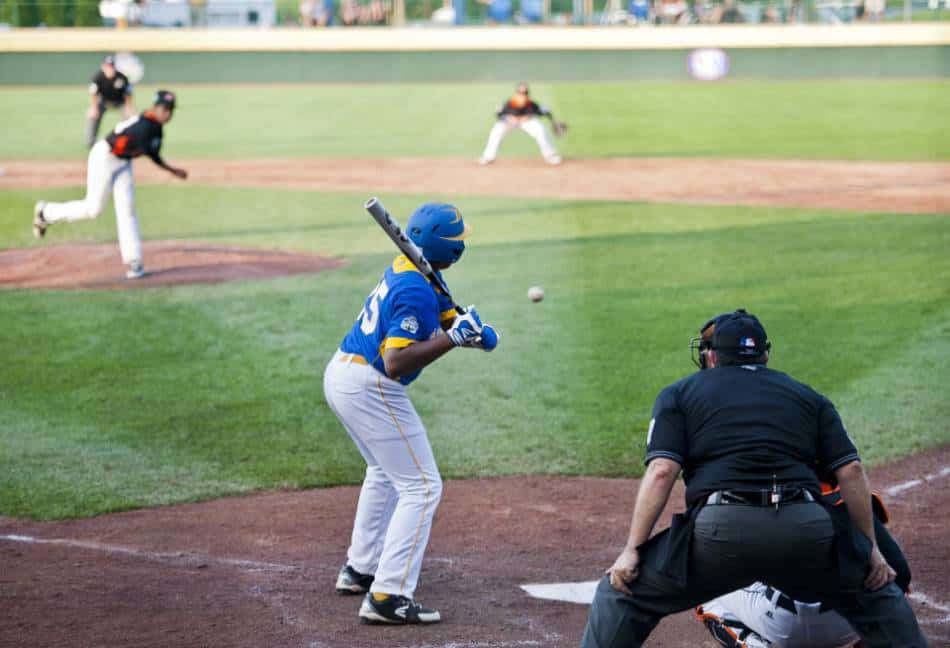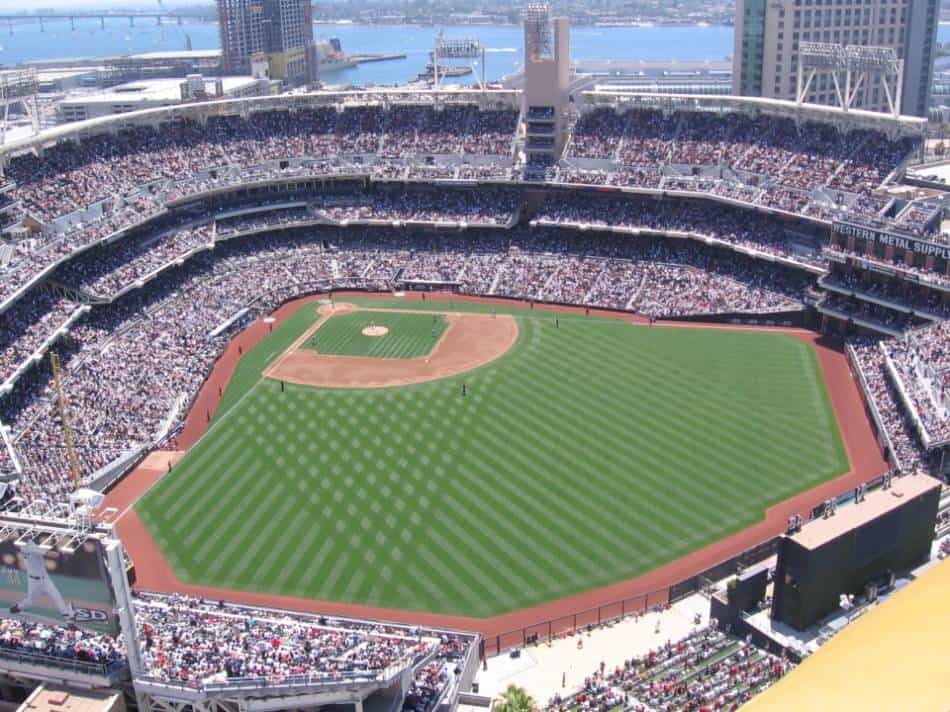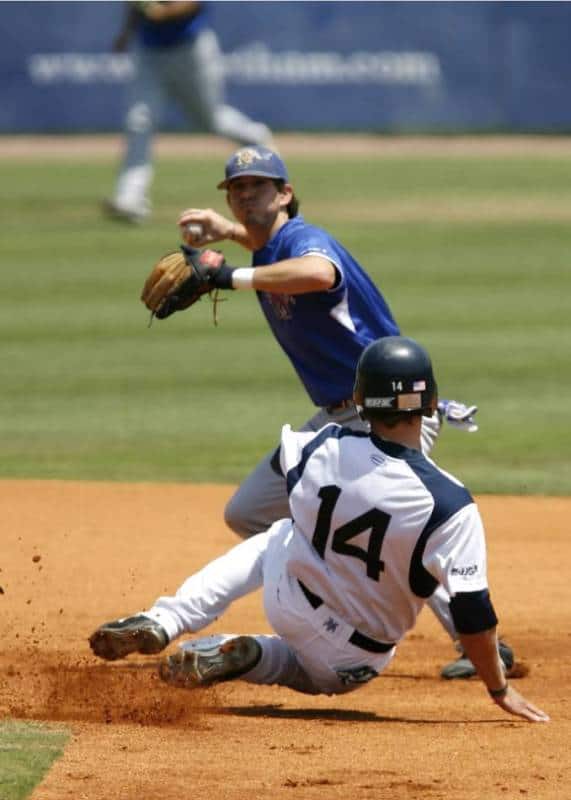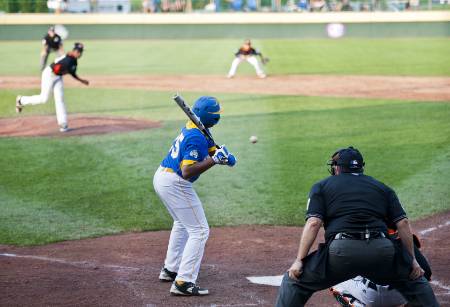
There are times when you listen to a baseball game or read about a game, and hear about a batter grounding into a “6-4-3 double play” or an inning ending on a “5-3 groundout.” To a new or casual fan, these may sound confusing. Huh? 6-4-3? Well, there’s a reasoning behind it.
In baseball, plays resulting in outs are often identified by numbers assigned to each fielder. This method designates the fielder(s) that made the play, as well as gives a general idea of where the batter hit the ball and the defensive players involved in the play.
These numbers, while they may seem confusing at first, are actually being used as shorthand when scoring baseball games by hand, as many fans still do at games. We’ll dive in and explain what it all means.
What Are Position Numbers in Baseball?

For well over 100 years, the nine positions on the field have been identified by numbers (1 through 9) for scoring and quick identification. These designations are not related to the players’ jersey numbers and are not tied to them when they move to different baseball positions.
Players are numbered 1 for pitcher, 2 for catcher, 3, 4, and 5 for first, second, and third base, respectively, 6 for shortstop, and 7, 8, and 9 for left, center, and right field respectively. These numbers are used as shorthand for plays, so a 6-4-3 double play is one turned by the shortstop, second baseman, and first baseman.
The exact origins of the numbered system are unknown, but it was likely created by Henry Chadwick, a 19th-century sportswriter who created the box score, along with many long-standing baseball statistics.
One scorecard from 1880 shows common scoring shorthand such as “K” for a strikeout, and notations such as “1-3” and “6-3” indicating ground outs and “8 fly” indicating a fly out.
Numbers were likely introduced for simplicity. It is much easier to write “1-3”, especially in a small space than writing “groundout pitcher to first base,” when both indicate the same play. Likewise, a fly out to center field can simply be written as “F8” (a modernized version of “8 fly”).
What Is a Double Play in Baseball?

The most common instance of baseball positions is in reference to a double play. Earlier on, we used the example of a 6-4-3 double play as an instance where you hear numbers and may be confused.
So what is a double play?
A double play is a play where two players (most commonly the batter and one runner) are retired on one play. Most double plays are the result of a ground ball in the infield where a defender retires a runner at second base, then throws to first base to retire the batter.
Because scoring shorthand lists all the baseball players involved in recording an out, many double plays will have three numbers, though there are some with fewer, or maybe even more.
Looking at data from the abbreviated 2020 MLB season, there were 1,386 double plays turned by Major League Baseball teams that year (0.77 per team, per game), with 1,245 (just under 90%) of them being ground-ball double plays.
Of these double plays, 482 were started by the shortstop, the most of any position, which means that 6-4-3 (shortstop to second to first) was likely the most common double play, though we don’t have definitive data.
Other common double play combinations are 4-6-3 and 5-4-3, as well as simply 4-3 and 6-3, the latter two being when a middle infielder steps on a base (or tags a baserunner) then throws to first.
Additionally, in 2020, there were two triple plays turned. Triple plays, in which all three outs in an inning are recorded on one play are very rare, with the most in an MLB season since 1901 being just 11.
Usually, these are the results of a grounder to third base (the hot corner), which involves the third baseman stepping on the base, throwing to second, and the second baseman throwing to first. This is scored as a 5-4-3 double play.
One of the triple plays turned in 2020 went this way, as well as all three turned in 2019. That said, fly balls and line drives can result in bizarre plays, with one triple play turned by Chicago White Sox on April 22, 2016, being scored 9-3-2-6-2-5, which was started by a caught line drive.
Due to the nature of double (and triple) plays, as well as the somewhat cumbersome way of describing them without numbers, announcers will often say that a batter “grounded into a 6-4-3 double play.”
However, they will rarely use numbers on conventional plays, instead usually saying “a groundout to third,” or “a flyout to left.”
Regardless, defensive numbers are helpful both in written and spoken situations when trying to give a shorter version of what happened.
FAQ
What Is GIDP in Baseball?
GIDP or “Ground Into Double Play” refers to a batter hitting a ground ball in the infield and the defensive team getting two outs on the play. For this scenario to play out, there needs to be at least one runner on base at the time of the grounder.
Why Is Shortstop 6?
Shortstop is denoted as “6” because the position served more as a shallow outfielder and a cut-off man in the early days of baseball. This was mainly the case due to outfields being bigger and baseballs being larger and lighter, making it harder for the outfield positions to throw directly to bases.
What Does 6 4 3 2 Mean in Baseball?
In baseball, 6 4 3 2 refers to a shortstop (6), second baseman (4) and first baseman (3) turning a double play. The 2 in the phrase refers to the number of outs the combination produces.
